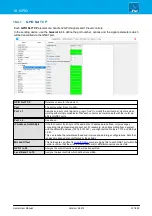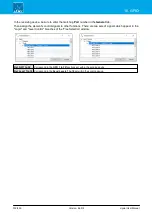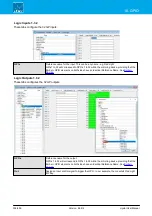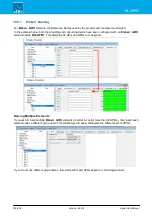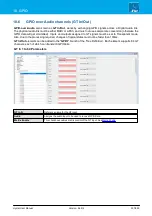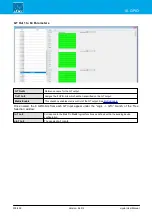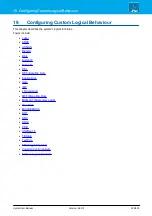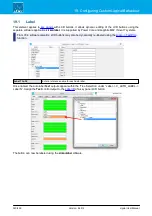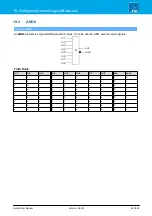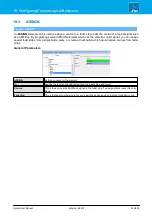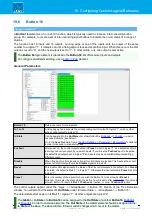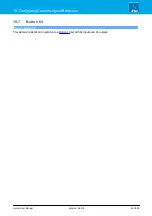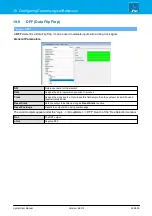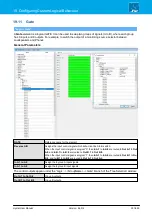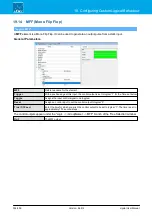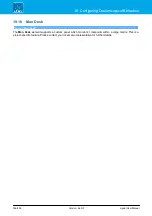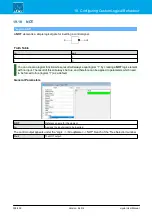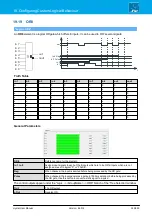
crystal User Manual
Version: 6.6.0/2
344/459
19. Configuring Custom Logical Behaviour
19.4
Blender
"Logic -> Blender"
A
Blender
element can be used to blend (crossfade) between two levels. The output can be used to control
another variable level parameter (e.g. the
Level
of a
).
The "Max" and "Min" levels define the maximum range of the element; the difference should be greater than
30dB for proper operation.
Up to eight additional input channels may be defined to action different blend times and levels within the
Max/Min range. Every channel has a trigger and logic outputs: "Active" and "At Level". "Active" shows the last
triggered channel. "At level" shows the reached destination level. A blend may be overridden by a different
trigger.
General Parameters
Blender
Reference name for the element.
Trigger Max/Min
Assign the input control signal which will action the fade up to maximum and fade down to
minimum level.
Time Max/Min
(1/10 sec)
Enter the duration of the fade up (to max.) and fade down (to min.).
Level Max/Min (dB)
Enter the maximum and minimum levels for the fade up/down; the difference should be
greater than 30dB for proper operation.
Init Value
Determines the state of the blender after a cold start, either
Level Max
or
Level Min
.
Trigger 1 to 8
Assign the input control signal which will action the interim fade(s).
Time 1 to 8
Enter the duration of each interim fade.
Level 1 to 8
Enter the level for the fade. Note that all levels must be within the
Level Max
/
Level Min
range.
The blender outputs appear in the "Level Control" branch of the ‘Tree Selection’ window when assigning a
variable level parameter. You can use the
Blend Level
and
Inverse Blend Level
to crossfade between two
signals.
Blend Level
The output of the blender.
Inverse Blend Level
The inverted output of the blender.


